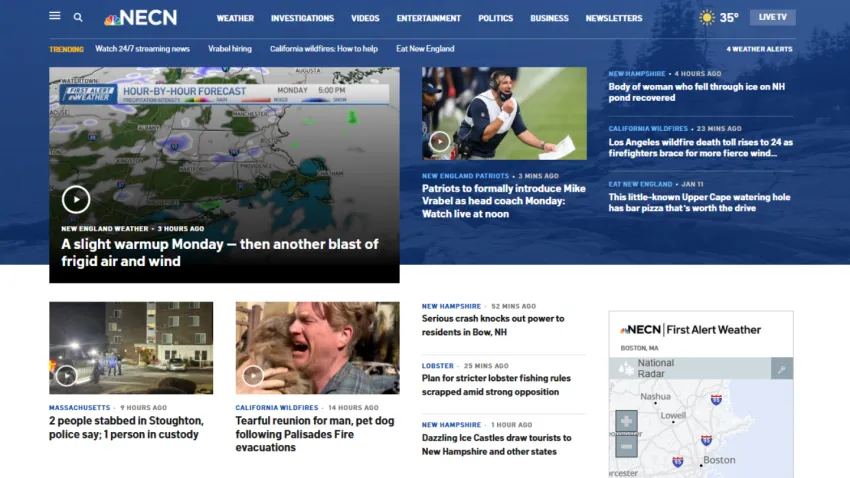

The Latest
-

Red Sox positional preview: Who will anchor the bullpen in 2025?
Who will step up to lead the Red Sox bullpen in 2025? Here’s a closer look at the group, which was among Boston’s biggest weaknesses last season.
-

Red Sox Opening Day roster projection: Which prospects make the team?
Will any of the Red Sox’ “Big Three” prospects make the 2025 Opening Day roster? Here’s our final roster projection with Game 1 just over a week away.
-

What does Stingley's huge contract extension mean for Gonzalez?
The cornerback market has been reset with Derek Stingley’s massive extension in Houston, and Patriots star Christian Gonzalez should benefit.
-

Karen Read prosecutors suggest defense ‘instigated' federal probe
Ahead of Karen Read‘s retrial, the prosecution has suggested in court that the defense “instigated” the since-closed federal investigation of how the Norfolk District Attorney’s Office handled the case. The claim was included as the prosecution moved, in new court filings, to keep several defense witnesses from testifying. T... -

Police investigating shooting in Framingham
Police are investigating a shooting that occurred in Framingham, Massachusetts, on Sunday. Framingham poice said they responded to Waverley Street around 8:30 p.m. Sunday for a report of a shooting victim. When they arrived, officers found a male victim. He was taken to an area hospital and is expected to survive. No arrests have been made at this ... -

Man struck and killed by vehicle in Framingham
A man has died after being struck by a vehicle in Framingham, Massachusetts, over the weekend, according to police. Framingham police said they responded to Winthrop Street on Saturday for a report of a pedestrian crash. When they arrived, they found a man in his 60s from Framingham on the ground, and officers began lifesaving efforts. The man was ... -

Colin Cowherd makes bold Patriots prediction for 2025 NFL season
Could the Patriots actually make the NFL playoffs in the 2025 season? At least one prominent personality thinks so.
-

Monday rain coming to an end. Here's what's next
Now that Boston’s rain is coming to an end, here’s what comes next… We’re nearly done with our deluge of rain, and it hasn’t been easy to navigate. Most of the rain in the past 24 hours brought over an inch for the Boston Metro, with Logan Airport picking up 1.67 inches as of midday. Sharon recorded 2.15 inches...
-

2025 NFL mock draft roundup: Post-free agency Patriots predictions
The Patriots still need major upgrades on their offensive line. The 2025 NFL Draft is the best remaining place to find them.
-

Video streaming company to conduct ‘mass layoff' at Boston office
Brightcove to conduct ‘mass layoff’ at Boston office









